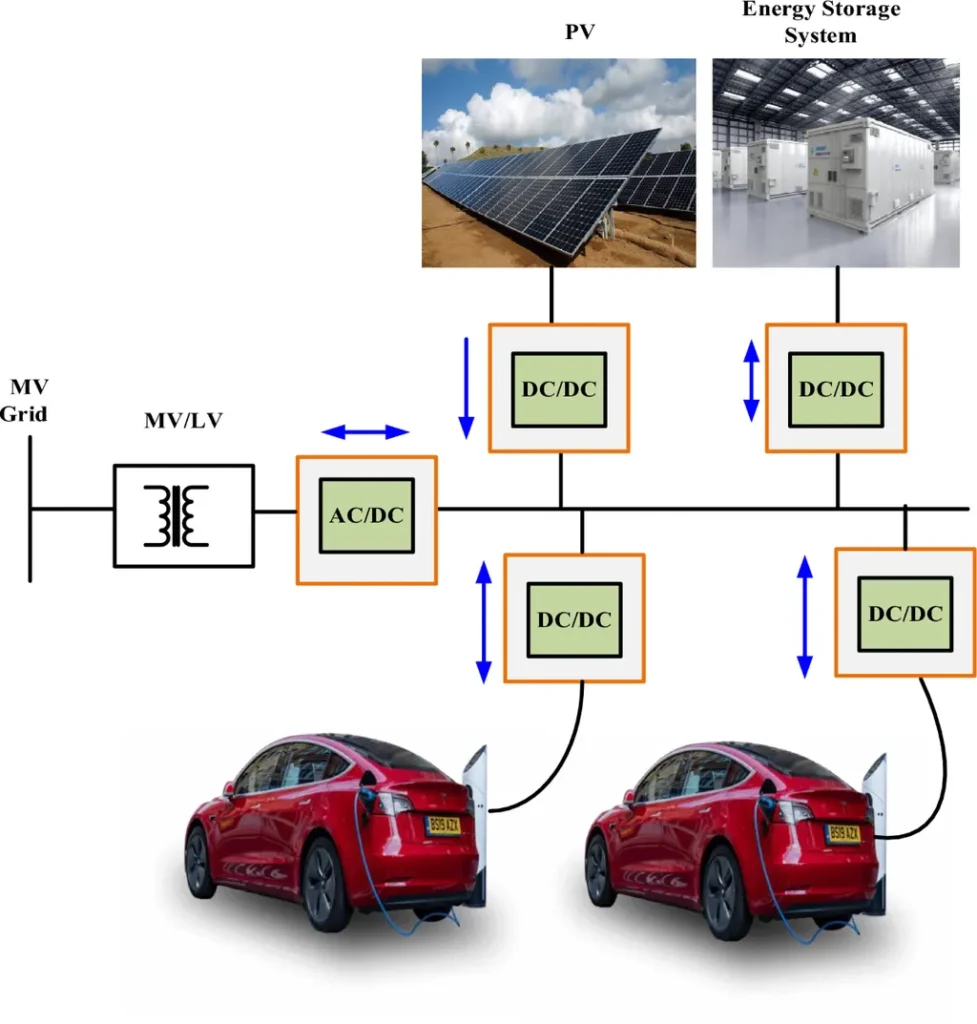In the rapidly evolving landscape of electric vehicles (EVs) and renewable energy, a groundbreaking study led by M. Thirumalai from the Department of Electronics and Communication Engineering at Saveetha Engineering College in Chennai, India, is set to redefine how we manage EV charging stations. Published in the journal “e-Prime: Advances in Electrical Engineering, Electronics and Energy,” the research introduces a novel multi-objective optimization framework that promises to revolutionize the integration of EVs into modern distribution networks.
The proliferation of EVs has brought about significant challenges, including increased power losses, voltage instability, and peak demand stress, all of which impact both grid operators and EV users economically. Existing charging strategies often fall short in addressing these issues simultaneously. However, Thirumalai’s study proposes a coordinated EV charging management system that not only minimizes power losses and voltage deviations but also maximizes the profitability of EV charging stations (EVCS) through dynamic pricing and Vehicle-to-Grid (V2G) support. Additionally, it reduces EV user costs while accounting for battery degradation.
One of the standout features of this research is the use of a hybrid renewable system that integrates photovoltaic (PV), wind generation, and battery energy storage systems (BESS). This setup reduces grid dependency and enhances local energy sustainability. The study employs a recently developed Cheetah Optimization Algorithm (COA) as an energy management system (EMS) to optimally schedule EV charging and discharging under realistic operational constraints. Monte Carlo Simulation (MCS) models uncertainties in renewable generation and stochastic EV arrivals, ensuring robust operation under variable conditions.
Comparative benchmarking against other algorithms like GA, PSO, and NSGA-II demonstrates COA’s superior solution quality, faster convergence, and computational efficiency. Simulation results on IEEE 33-bus and 118-bus systems reveal that under coordinated optimal conditions, network losses reduce by 15–17%, voltage profiles improve by 40–45%, EVCS profitability increases by 55–60%, and total EV operating costs decrease by 40–45% compared to uncoordinated stressed operations. Even under dynamic, price-responsive operations, COA maintains significant improvements in technical performance, economic efficiency, and user-centric operation.
“This study highlights the potential of COA to simultaneously enhance technical performance, economic efficiency, and user-centric operation,” Thirumalai explained. “It provides a scalable, resilient, and practical solution for integrating high EV penetration with renewable energy in future smart grids.”
The implications of this research are far-reaching. For the energy sector, the ability to optimize EV charging stations through a multi-objective framework could lead to more efficient and sustainable energy management. The integration of renewable energy sources and the use of advanced algorithms like COA could pave the way for smarter, more resilient grids. As Thirumalai noted, “The future of EV integration lies in coordinated, intelligent systems that can adapt to the dynamic nature of both energy supply and demand.”
In conclusion, this research not only addresses current challenges but also sets the stage for future developments in the field of EV charging and smart grids. As the world moves towards a more sustainable energy future, studies like these are crucial in shaping the technologies and strategies that will drive this transition.

